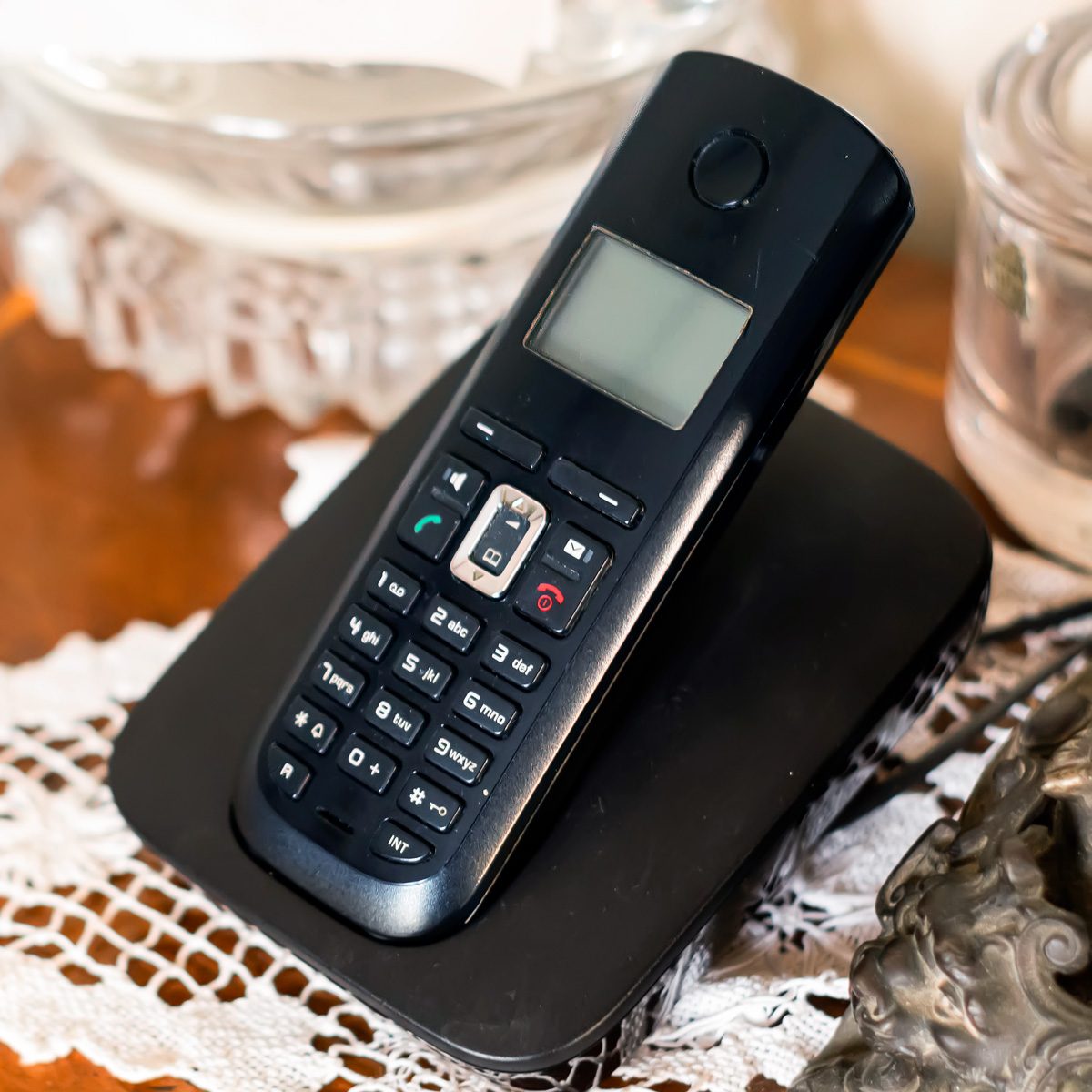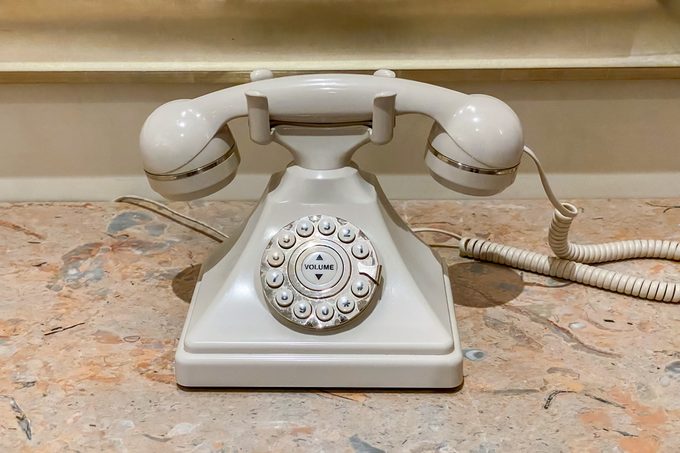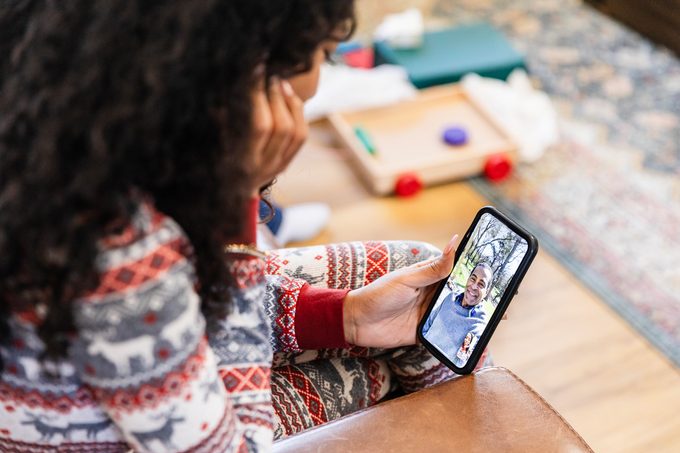Going old school with a landline can be a smart call in certain situations

Here’s Why You Should Get a Landline—Yep, Even in 2025

For better or worse, we’ve become increasingly reliant on technology, both in our personal and professional lives. This is especially true when it comes to phones, as a whopping 98% of Americans now own a mobile phone, according to Pew Research. And according to a 2022 survey by the U.S. Centers for Disease Control and Prevention, only about 29% of U.S. adults still own a landline, down steeply from 2004, when more than 90% of adults had one.
The massive swing over the past two decades is likely due to mobile phones’ ability to communicate from virtually anywhere instead of being limited to a home. Many Americans can’t justify paying a monthly fee for a service that seems, well, antiquated.
Problem is, cellphones are great … until they aren’t. Anyone who has been unable to charge their phone during a brief power outage from a thunderstorm or snowstorm or who was affected by a cell service outage knows that life can grind to a halt when we lose access to calls, texts and emails. Read on to learn about the advantages of a landline and how to get one.
Get Reader’s Digest’s Read Up newsletter for more tech, travel, humor and fun facts all week long.
Why do you need a landline?
It may be time to rethink landlines after all. Also referred to as POTS, an easy-to-remember acronym that stands for “plain old telephone system,” this trusty ol’ tech may serve as a lifeline in the event of a mobile service disruption—including natural disasters, when you most definitely want to keep in touch.
“Actually, I still own a landline,” concedes Tony Anscombe, chief security evangelist for ESET, a leading cybersecurity company. “It’s mostly because I live in a house that’s remote, and so we still use copper for internet and phone service here.”
A landline can be a lifesaving backup if your mobile phone service goes down, which happens from time to time on all the major carriers, whether because of a random service outage or one caused by inclement weather.
AT&T customers, for example, experienced a wireless outage for several hours in February 2024, due to what was billed as a coding error during network expansion. In September 2024, Verizon suffered a major outage, and two months later, so did T-Mobile.
Hurricane Milton, a Category 4 hurricane that hit the United States in October 2024, caused 12.3% of cell sites to be down in areas of Florida impacted by the storm, according to the Federal Communications Commission (FCC) Disaster Information Reporting System report. AT&T, T-Mobile and Verizon were all affected, as were other carriers.
How could a landline help in an emergency?
Landlines work better during power outages because they receive power directly through the phone line itself, which is separate from the household electricity grid. Therefore, the phone company’s backup generators can power the lines even when your home power is out.
Another advantage in an emergency situation: Landlines allow emergency services to locate a 911 caller‘s origin more easily than an enhanced 911 (also called “e911”) call on a cellphone or smartphone. That’s because mobile phones aren’t associated with one fixed location or address.
That said, enhanced 911 calls have improved over the years, thanks to advancements in carrier services, GPS tracking and dispatching equipment, which help emergency service pinpoint your location. “While it’s getting better, an e911 call [on a smartphone] doesn’t provide your location as accurately as a 911 call on a landline, when you’re right at the handset and they know your exact address, even if you can’t talk,” says Anscombe.
What is a landline?

Before we discuss why you might want a landline, it’s helpful to understand the technology.
POTS
A POTS phone system (aka traditional landline) was the standard form of telephone service from the 1880s to the fairly recent past. If you’re over 40 years old, you likely grew up with one of these in your home.
This technology (almost always) uses copper wires to transmit your voice, which is converted into analog electrical signals and then converted back into audible sound waves when it reaches its destination, allowing the person you’re calling to hear your voice.
While telephone users may think they’re calling someone else directly, behind the scenes, there is an extensive network of interconnected telephone lines, switches and infrastructure to enable communication between POTS lines. (As you may have seen in old movies, switchboard operators, usually female, played an important role in routing calls until the 1960s.)
Over the past couple of decades, digital and internet-based communication technologies took over, though landlines were still used in business environments until fairly recently.
The benefit of POTS
While POTS lines have declined in popularity since the rise of cellphones and smartphones, they are still common in regions with unreliable or limited internet access. They’re also ideal for critical services like emergency lines and home or business alarm systems that demand high reliability.
“In case of a power or cellular outage, I can see the appeal of a landline, as it should still work, unless you only have a cordless phone at home, which would also rely on power,” says Carolina Milanesi, president and principal analyst at Creative Strategies, a Silicon Valley–based market research firm. “Also, good luck in trying to remember anyone’s phone number if you lose power on your smartphone,” she adds with a laugh. “We’ve grown reliant on everything being stored on our smartphones.”
Landlines are also essential for connecting devices like fax machines, which are still heavily used in the health care and finance industries today, as they’re considered secure and dependable means of transmitting crucial and sensitive information.
Plus, compared with mobile phones, landlines are less likely to drop calls or have poor reception, often have better sound quality and are generally easier to operate for aging adults, especially among those with dexterity challenges. (An exception to the sound-quality benefit is the cordless phone, “which may sound worse than a mobile phone, especially older models that could have static and such,” Milanesi says.)
Anscombe says another consideration is that some fall detectors, like the Lifeline products—often worn on a lanyard or wrist of someone at risk of falling—may require a landline for the device to call someone in the event of a fall. This is something to keep in mind before considering the cancellation of landline service.
“I also think there’s a perceived security around owning a landline, especially for older folks,” adds Anscombe. “They could get rid of their landline, but many won’t, as they know they can pick up the handset, and it just works.” He adds that his mom falls into that category, “but if I asked her when the last time she actually used her landline was, it would probably be years ago.”
The disadvantages of POTS
Landlines can be difficult to find these days, as some telecommunications companies have ceased (or limited) their offerings. Because demand has subsided, the costs for a POTS line could be higher than a few years ago, even upwards of $50 per month. Additional charges may apply for features like long-distance calling, caller ID, voicemail and other add-ons.
“This isn’t always the case, though,” counters Milanesi, who says the only reason she still has a landline is because she gets the service for free from her mobile and internet company. “I don’t think I’ve ever used it, to be honest.”
Other downsides: You’re limited to using the landline at home. And it’s not a given that you’ll get service. Because fewer people now own a landline, the FCC is phasing out requirements for phone companies to provide landline services. In many new homes, builders aren’t even installing phone jacks.
With his cybersecurity expertise, Anscombe provides one more advantage to a smartphone compared with a landline: “Cordless phones are also less secure than smartphones, [as they’re] more susceptible to eavesdropping and open to other vulnerabilities.”
What’s the best alternative to a landline?

If your internet service provider or TV company doesn’t offer a landline service, you can research the companies in your area that can still provide one. A quick Google search may do the trick, or you can ask neighbors which service they use.
Still striking out? The following are alternatives to a traditional landline.
Consider a VoIP line
If you’re having trouble finding a POTS provider, an alternative would be a VoIP phone, which uses the internet to make phone calls. VoIP services are often more cost effective than landlines (especially for long-distance calls), and you often get free features and add-ons, such as voicemail, three-way calling, call forwarding and caller ID.
Use messaging apps, websites and smart speakers
Another option is to leverage messaging apps and websites to make free phone calls to others. But the caveat is the person you’re calling must be on the same service as you. Popular options include WhatsApp, Facebook Messenger, Skype, FaceTime, Zoom, Google Meet, Signal and Microsoft Teams. These services support video calls and file transfers, and they offer other benefits.
If you have power and internet connectivity, remember that you can place free audio calls using a smart speaker, such as an Amazon Echo or Google Nest device. Simply say the wake word, like “Alexa” (on Amazon devices) or “Hey Google” or “OK Google” (on Google Nest speakers), followed by “dial [10-digit number].” No smartphone is required.
Consider backup power
Both a VoIP phone and messaging apps require power and internet access. While there’s little you can do if your Wi-Fi or wired (Ethernet) connection fails, such as if your internet service provider experiences an outage, you can invest in a backup solution for your devices should you be without power.
Similar to small and portable chargers (“power banks”) that juice up a smartphone and other gear, larger battery-based power generators can keep appliances, computers, medical devices and other equipment running for days. (A rechargeable battery-based generator may be better than a gas one since it can be used indoors, is quieter and doesn’t produce carbon monoxide.)
SOS satellite services
If your mobile phone can’t access cellular towers because your carrier’s network is down or you find yourself “off the grid” (such as in the woods), both Apple and Samsung support emergency satellite SOS services on the latest iPhones and Samsung Galaxy phones, respectively. Free for now, this feature first connects you to satellites via on-screen instructions. From there, you can type text-based messages to emergency services. You can also share location info and a description of what’s going on.
Mobile phone carriers, including AT&T and Verizon, are also offering emergency satellite support on certain devices.
Some satellite-based internet services, like Starlink, also support calls in emergencies. But be aware that the dish, router and other equipment will require power.
On the topic of satellite connectivity, Anscombe says the school his partner teaches at has satellite phones for use in case of earthquakes or other natural disasters that can knock out power or cellular service. When pressed about these phones still requiring power to use, Anscombe says they’re always charged up and ready to use in should an emergency occur.
About the experts
|
Why trust us
Reader’s Digest has published hundreds of articles on personal technology, arming readers with the knowledge to protect themselves against cybersecurity threats and internet scams as well as revealing the best tips, tricks and shortcuts for computers, cellphones, apps, texting, social media and more. We rely on credentialed experts with personal experience and know-how as well as primary sources including tech companies, professional organizations and academic institutions. We verify all facts and data and revisit them over time to ensure they remain accurate and up to date. For this piece, Marc Saltzman tapped his 30-year experience as a technology journalist, the author of several books (including Apple Vision Pro for Dummies) and the host of the syndicated Tech It Out radio show and podcast to ensure that all information is accurate and offers the best possible advice to readers. Read more about our team, our contributors and our editorial policies.
Sources:
- Tony Anscombe, chief security evangelist for cybersecurity company ESET
- Carolina Milanesi, president and principal analyst at market research firm Creative Strategies
- Pew Research: “Demographics of Mobile Device Ownership and Adoption in the United States”
- ULTATEL: “What is a POTS Line?”
- FCC: “Wireless 911 Service”
- FCC: “FCC Adopts New Technology Transitions Rules and Invites Comment On Proposed Elimination of Outreach Requirements”























